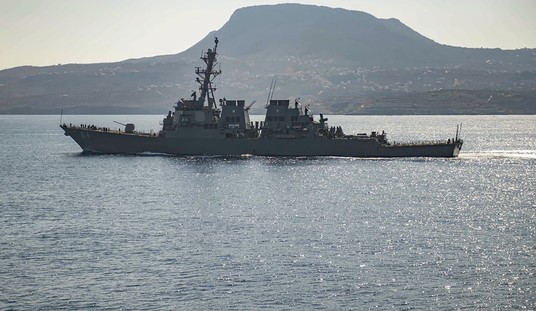Somali pirates launched fewer successful attacks on commercial shipping in 2011. European Union nations want that trend to continue through 2012 and beyond. Last week, EU nations agreed to let their military forces patrolling the Somali coast conduct strikes on pirate facilities up to two kilometers inland. Attacking pirate bases represents a significant change in military policy but is in line with more aggressive counter-piracy measures being implemented in areas subject to Somali pirate attacks.
Escalation has always been a military option. Resistance has thwarted previous pirate attacks.
In 2005, Somali pirates attacked the cruise ship Seabourn Spirit. Despite damaging the civilian liner with automatic rifle fire and rocket-propelled grenades, the pirate attack failed. Why? The crew resisted. They used the ship's wake to jostle the pirate speedboats then employed a non-lethal but ear-drum rattling sonic weapon. The pirates withdrew -- to attack easier prey at a more opportune moment.
International forces patrolling off the coast have counterattacked at sea. The most spectacular example occurred three years ago, when a U.S. Navy SEAL team killed three pirates who had taken an American merchant ship captain hostage. At least one pirate had a weapon pointed at the hostage when the SEALs fired. The successful rescue was a near thing.
A Danish Navy rescue attempt in February 2012 did not end as well. Somali pirates seized an Iranian vessel and took 18 hostages. A Danish warship followed the ship toward Somalia, then ordered the pirates to surrender -- an order indicative of the anti-piracy patrol's increasingly firm response to attacks. They refused. The Danes boarded the freighter. Two hostages died in the incident.
Firmness, however, has benefits. StrategyPage.com noted in a report last month that "anti-piracy patrol and ship operators have become more efficient at dealing with pirates." Improved detection techniques and evasive maneuvers have made it "harder for pirates to even get into position to make an attack."
Recommended
Shipping companies know resistance works. Many large commercial ships now have armed security teams on board when they transit pirate-infested waters. Security firms have found that retired British Royal Marines have the perfect skill set for "sea marshal" work. Convoy and surveillance operations by naval vessels and aircraft in the international anti-piracy patrol have also frustrated the pirates. StrategyPage pointed out that the armed security teams "shoot back" as the pirates approach, and the pirates are now very leery of armed naval helicopters, so fewer pirate attacks are succeeding.
NATO reported that the pirates had a 16 percent success rate in 2011. In 2008, the figure was around 35 percent.
Successful attacks, however, still reap spectacular ransoms. In 2007, Somali pirates reportedly banked over $30 million paid to free vessels and crewmen. The India Times estimated in 2010 ransoms exceeded $200 million. Credible? Who knows, but that year one South Korean tanker was allegedly ransomed for $10 million. A net of $12 million a month in ransoms might be a reasonable estimate, and that goes a long way in Somalia.
Ransoms are not the biggest cost. StrategyPage estimated that shipping firms spend $500 million a month for security measures. This cost is passed on to consumers. Oceansbeyondpiracy.org estimates military costs for the Somali anti-piracy operation run another $1.27 billion a year.
Thus the EU rationale for strikes on pirate maintenance and communication facilities: Stop the attacks where they start. At the moment, the directive forbids attacks by ground forces, so the assumption is this means precise air attacks. The directive, however, is controversial, particularly in Germany. Der Spiegel reported that German opposition parties are against the directive. Precise air strikes suggests helicopters attacking with cannons and missiles. The Germans do not want to face a "Blackhawk Down" scenario, with a chopper crew lost to Somali ground fire.






















Join the conversation as a VIP Member